In a major achievement that would give a fillip to diversification of mariculture, the ICAR-Central Marine Fisheries Research Institute (CMFRI) has succeeded in developing the seed production technology of John’s snapper (Lutjanus johnii) first ever in India. Success in captive spawning and seed production of the fish, which was carried out at the Visakhapatnam Regional Centre of ICAR-CMFRI, has set a stage for farming of John’s snapper using hatchery produced seeds. This is expected to open up enormous scope for the country’s aquaculture ventures in near future through species diversification.
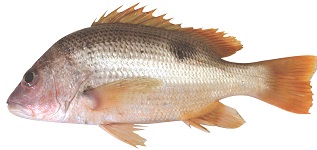
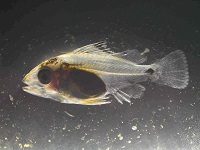
Immense potential for mariculture
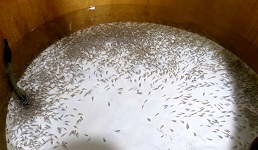 John’s snapper, belonging to the family Lutjanidae, is widely distributed in the Indo-west Pacific, extending from east Africa to Fiji, north to the Ryukyu Islands and south to Australia. In India, the fish is reported from both the west and the east coasts. It inhabits mostly the coral reefs and rocks, deep seas, and occasionally in estuaries. The species has immense potential for mariculture owing to its fast growth rate, easy adaptability to culture conditions, quick acceptance of artificial feed, pleasant appearance, good meat quality and high consumer preference.
John’s snapper, belonging to the family Lutjanidae, is widely distributed in the Indo-west Pacific, extending from east Africa to Fiji, north to the Ryukyu Islands and south to Australia. In India, the fish is reported from both the west and the east coasts. It inhabits mostly the coral reefs and rocks, deep seas, and occasionally in estuaries. The species has immense potential for mariculture owing to its fast growth rate, easy adaptability to culture conditions, quick acceptance of artificial feed, pleasant appearance, good meat quality and high consumer preference.
Technology
The research work was initiated with wild-caught adult fishes during 2018-19 as a component of a DBT-funded project entitled ‘Developing a New Candidate Species for Mariculture: Marine Finfish John's Snapper, Lutjanus johnii. Adult fishes of 3-3.5 kg size maintained in the offshore cages installed off Visakhapatnam were selected and transported to the hatchery complex. They were subjected to prophylactic treatment for a period of two weeks and then stocked in indigenously developed Re-circulating Aquaculture System (RAS) with a capacity of 125 tonne. The fishes were acclimatized and were fed upon squid, twice a day till satiation. Gonadal profile of the fishes was assessed routinely using live ovarian biopsy. Once the ova size of females was found to be optimum, females and oozing males were injected with inducing hormone for spawning. Induced fishes responded 42 hours post-induction, and the fertilized eggs obtained were collected using flow-through cum recirculation of tank water. The collected fertilized eggs were treated.
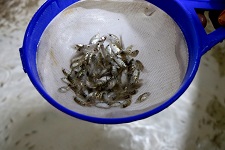
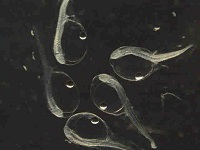
and stocked in FRP tanks with a capacity of 2 tonne for incubation and larval rearing. Larvae hatched out after 14 hrs at 28-30 oC. Mouth opened 54 hrs post-hatching. The larval rearing was carried out using green water system with different live feeds such as Nannochloropsis sp., Isochrysis sp., copepod nauplii, rotifers and Artemia nauplii. Larvae were weaned on artificial feed from 20 day post-hatch (DPH). Larvae started metamorphosis from 22 DPH, which was completed by 30th DPH, by this time; the larvae were fully weaned on artificial feed. After 42 days of rearing post-hatch, a survival rate of 3.67% was achieved and the fry have reached an average size of 3.8 cm and 0.62 g. This is the first report of successful broodstock development, induced breeding and seed production of John’s snapper (Lutjanus johnii) under confinement in the country.
The price of this fish is Rs. 450 in domestic market.
(Source: ICAR-CMFRI,Kochi)








Like on Facebook
Subscribe on Youtube
Follow on X X
Like on instagram